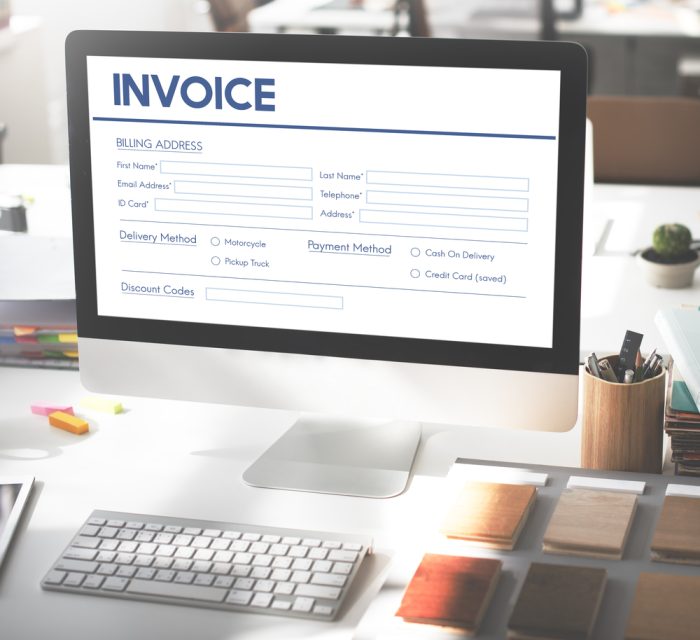Businesses utilize different systems in their operations, from supplying goods to payment to customer handling. A commonly used payment system by most businesses organizations is an invoice. An invoice is a form of a bill that you issue to your customers, which indicates the goods or services they’ve received from you and the total price they need to pay you. Most clients take around 30 to 60 days to pay up invoices. This is disadvantageous to many businesses since it affects their cash flow, especially when payments are late. Financiers developed various mechanisms to counter this issue. These mechanisms are invoice discounting and invoice factoring.
Both systems allow you to get cash advances from your unpaid invoices; the difference lies in how it’s done and the requirements of each. With both, there are three parties involved: you (the borrower), the lender (also known as the factor), and your customers. But what are the differences in the two options, and which is the best for your business?
The following factors help you to determine the best choice for your business:
Control
Control, in this case, refers to which of the three parties take charge of the sales ledger, including invoices. The invoice factoring company controls the sales ledger. They collect payments from your customers; your clients pay them directly instead of you. Control arises from the fact that with invoice factoring, you sell your invoices to the lender, making them the holder of the invoices.
On the other hand, with invoice discounting, you have total control of your sales ledger and your clients make payments directly to you. Here, you do not sell your invoices. Instead, they act as collateral against the advance you receive from the lender.
Business Focus
Business focus refers to the amount of time you spend on your operations that bring in returns. This aspect is tied to the control discussed above.
With invoice factoring, you sell your invoices to the lender. This means you are no longer responsible for following up on payments with your clients; the lender does this. Such a setup allows you to focus on other critical operations instead of calling your clients every so often to get funds to run your business.
With invoice discounting, you do not have enough room to focus on your business. Here, you are still responsible for your invoices and need to follow up on their payments. This consumes a lot of time and adds a lot of stress to your team since you still have to pay back the advance within the agreed period with your lender. Therefore, it divides your attention from the core aspects of your business, which is undesirable.
Confidentiality
As you run your company, most clients do not want other parties to know their business. Confidentiality between the two invoice financing options varies. For instance, invoice discounting allows for confidentiality since you control your sales ledger and your customers pay money directly to you. Also, the lender do not complete a background check on your customers’ credit history. Here, information remains private, which builds trust with your customers.
On the other hand, there is less confidentiality with invoice factoring. This is because the lender takes over from you and directly handles your client. Also, most factors do a background check on your clients before getting into a contract with you. This directly impacts trust and confidentiality.

Risks
Both invoice discounting and invoice factoring are less risky concerning getting funds for your business. However, the level of risk differs in each option.
Invoice factoring has a lesser risk factor for both you and the lender. To you, you do not need any collateral to acquire a cash advance. So, it safeguards your business assets. Also, if the client fails to pay as agreed, it’s no longer your concern but the lender’s.
Although it seems risky for the lender to get money from clients, the risk is minimal since they have the necessary tools to ensure prompt and efficient payments.
The risk is slightly higher with invoice discounting since you present your invoices as collateral in order to get funds. The risk is tied to the failure of your clients to pay their debts early in advance. If they fail to pay you or make late payments, you must find an alternative solution to pay your lender.
Conclusion
This article discussed invoice discounting and factoring under various crucial factors. Based on the discussion, decide to settle for invoice factoring if you don’t mind losing control over some aspects of your business, want more business focus, aren’t too keen on confidentiality, and are a small business. The latter is crucial since factoring has a lower risk involved.
On the other hand, discounting is your go-to choice if you want total control of your operations. It also works for you if you do not mind handling non-crucial operations in your business, you prefer client confidentiality, and you’re a medium or large enterprise. Being a medium or large enterprise is essential since you have some assets that can cover cases where your clients fail to pay their debt in time.
Before settling on any one option, you need to weigh the pros and cons of each and consider your business operations’ ability to handle either.
Find a Home-Based Business to Start-Up >>> Hundreds of Business Listings.

















































